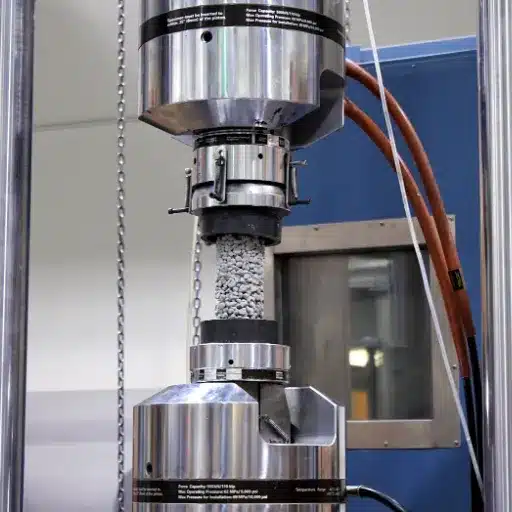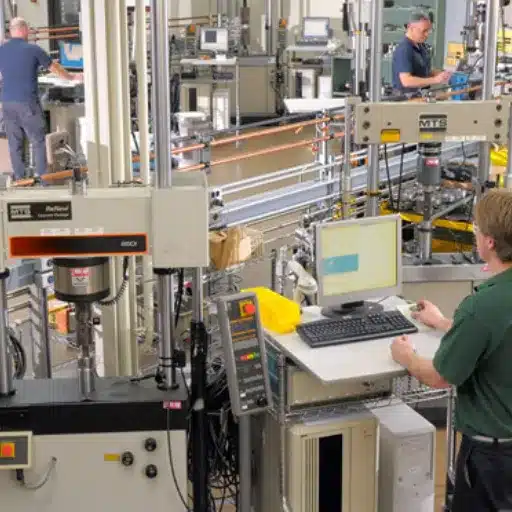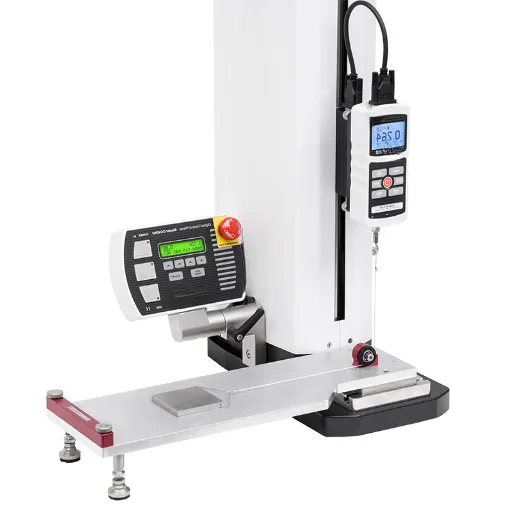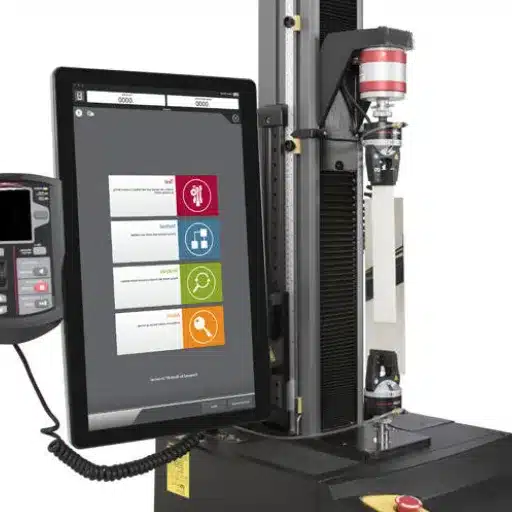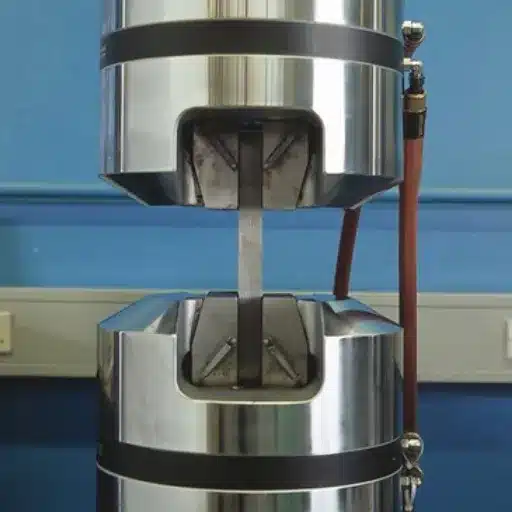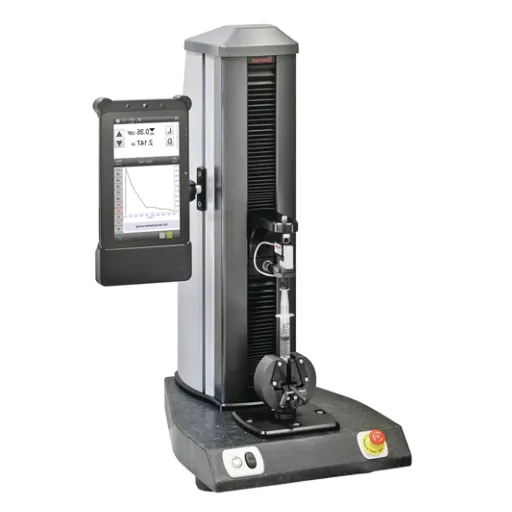The materials used in engineering and manufacturing often possess other extreme traits under which their usefulness still stands or does not stand for the critical systems. Thus, if materials must be ensured to function with reliability and safety, their behavior under prolonged stress and high-temperature application must be studied. It is here that creep, stress, and rupture testing come into the picture. In essence, these tests tell engineers about the long-term durability and structural integrity of a material and enhance better decision-making with respect to application; be it aerospace or power generation. In this article, we discuss the basics of the test, why it is so important to material science, and yet how industries have gone beyond the lack thereof. Whether an experienced engineer or some interested party, you are about to dive into the science behind material resilience.
Understanding Creep and Stress Rupture
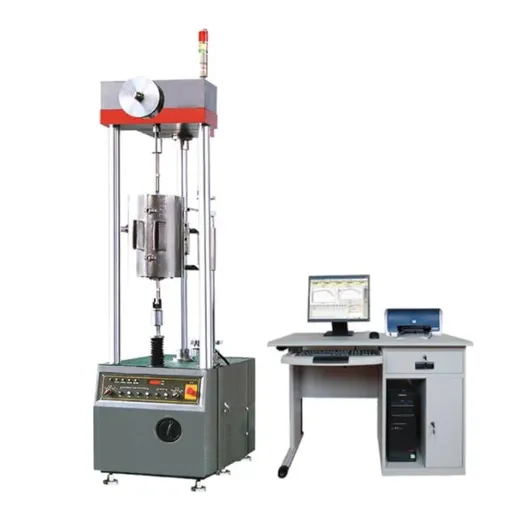
Definition of Creep and Stress Rupture
The term creep refers to the slow and permanent deformation of a material under constant stress applied for a long time, typically at elevated temperatures. It happens even if the stress is below the yield strength of the material. Factors that bear on creep are temperature, material properties, and the magnitude of applied stress. Creep has to be considered in the industries where materials are subjected to high temperatures and stresses, like turbine blades, pipelines, and power plants.
Stress rupture is closely related to creep but focuses more on the breaking of a material under continuous stress at a certain temperature over a period. Although creep is the slow deformation process, stress rupture refers to the breaking point of the material. Stress rupture testing gives an indication of the time that materials can sustain specific conditions, so as to be used in life expectancy and safety parameters.
Knowing about creep and stress rupture is important for designing components that will resist deformation or premature failure at high-temperature conditions. From creep-rupture testing data, engineers select proper materials, set operational limits, and extend the life of equipment to safely and efficiently perform on a high-stakes application.
Importance of Creep and Stress in Materials Engineering
Design considerations for engineers such as those for selecting materials and designing components to operate at high temperatures and under stresses must involve creep and stress, since these factors determine long-term reliability and safety. Creep itself is a gradual deformation occurring in materials after long hours of exposure to some constant stress: such phenomena are prominent in high-temperature environments. Stress rupture, conversely, stands for when materials finally break up under continuous stress applied over some period. The two phenomena-if left unfettered brought about by extraordinary risks on safety or system failure.
Key Benefits of Understanding Creep and Stress Rupture:
- Enhanced industrial performance in aerospace, power generation, and chemical processing
- Optimal material selection for high-temperature applications
- Guaranteed operational efficiency and safety
- Prevention of unexpected system failures
Understanding creep and stress rupture is important because of their implication in industrial performances, such as those in aerospace, power generation, or chemical processing. For instance, unusable turbine parts, boilers, or heat exchangers will require materials to maintain structural integrity under extreme conditions for extended periods. Through the study of creep and stress rupture data, engineers may choose the optimum materials, guarantee operational efficiency, and mitigate the chance of an unexpected failure.
Creep-rupture testing is thus of paramount importance in solving these challenges from the materials engineering perspective. They essentially simulate some real scenario conditions, providing a mostly experimental method for measuring and predicting the behavior of materials over a period of time. Data gathered from such experiments then informs the designing of components with suitable safety factors and standards. Thus, knowledge on stressed effects and creep promotes the design, service life, safety, and reliability of vital systems, which lead to engineering projects.
Applications of Stress Rupture Testing
Aerospace Industry
Components required to resist extreme forces in jet engines and spacecraft. Ensures components won’t fail throughout operational life, protecting human life.
Power Generation
Turbines and boilers in nuclear and fossil-fuel power plants under constant high stress and temperature. Material failure cannot be accepted.
Petrochemical Industry
Piping, reactors, and storage vessels exposed to corrosive substances at raised temperatures. Critical for safety and compliance.
The subject of stress rupture testing enjoys the widest applications in industries where materials are subjected to high temperatures and stress for prolonged periods. One such application, the one most classically associated with aerospace works, pertains to components that are required to resist extreme forces in the jet engines and spacecraft. Under stress rupture testing, these components are ensured that they will not fail throughout their operational life, putting at risk human life.
Other areas of considerable application include the power-generation industries, mainly turbines and boilers in nuclear and fossil-fuel power plants. These systems lie under almost constant high stress and temperature, and then material failure cannot be accepted in any case. The design of materials-whether in the aspects of life, performance, or quality-is aided by stress rupture test results, ensuring the safety and efficiency of power-generation systems.
Also, stress rupture testing is of utmost importance in petrochemical industries, given that piping, reactors, and storage vessels are exposed to corrosive substances at raised temperatures. Test procedures attempt to predict the long-term behavior of materials in a working environment and accordingly select materials and design maintenance schedules to avoid failures and comply with regulations. Stress rupture testing, hence, comes into consideration applicable in other industries as well, where it is used to ensure operational safety and extend the life of critical components.
Stress Rupture Test Process
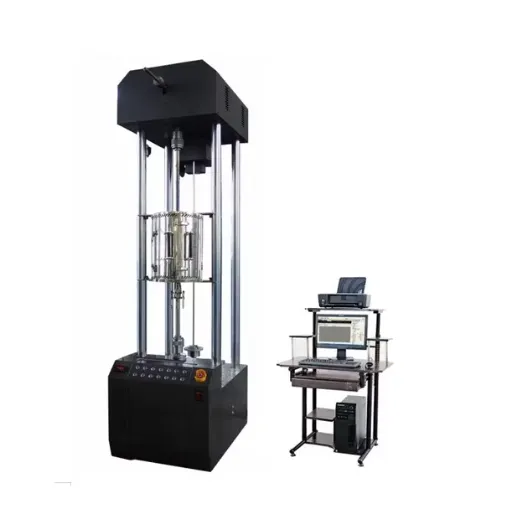
Overview of Stress Rupture Test Methods
Stress rupture testing involves applying a constant load or stress upon the sample in an elevated temperature till failure occurs. The time-dependent deformation and rupture of a material are measured to provide important information about the durability of a material when subjected to such conditions for an extended time. Such tests mimic real-time stress levels and hence, go a long way in casting predictions about the service life of a material in high-temperature applications.
Testing Process Steps:
- Specimen Preparation: Test specimens made to vary in configurations and dimensions according to standards
- Load Application: Samples stressed to a constant magnitude using precise load application instruments
- Temperature Control: Maintaining a predetermined constant temperature in a controlled environment
- Data Collection: Time-to-failure was carefully noted while observing creep deformation
- Analysis: Studying the mechanical behavior of a material with time
The test specimens are made to vary in configurations and dimensions according to standards to begin with. After preparation, such samples were stressed or loaded to a constant magnitude inside a highly controlled environment using a very precise load application instrument while holding the temperature at the predetermined constancy. Time-to-failure is carefully noted, while creep deformation is also observed during the test to enable studying the mechanical behavior of the material with time.
The collection of data aids in deciding whether the material is suitable for a given application, including its limiting temperature and lifespan. Taking into account the safety and efficiency of materials in critical operations, stress rupture tests serve industries such as aerospace, energy, and manufacturing. The results thus become a major consideration with respect to selecting materials, designing components, and planning maintenance so that long-term reliability and industry-standard conformance are assured.
Equipment Used in Stress Rupture Testing
| Equipment Type | Function | Key Features |
|---|---|---|
| Testing Machine | Apply a constant load/stress to the specimen | Maintains stress level for extended periods |
| High-Temperature Furnaces | Simulate elevated temperature conditions | Precise temperature control throughout test |
| Extensometers | Measure material deformation over time | High precision strain measurement |
| Data Acquisition Systems | Record stress, temperature, and time data | Comprehensive data logging and analysis |
Stress rupture testing requires special apparatuses for accurate and trustworthy results. Paramount among these is the testing machine which has the capacity to apply a constant load or stress onto a material specimen in an environmental set-up. Such machines are designed for hold a certain stress level for long periods, as required for testing the long-time behavior of the subjected material.
Second in importance are furnaces or chambers for high-temperature applications for the material to be tested in conditions simulating its use. According to the field–e.g., aerospace or energy–the materials are put under severe heat. These furnaces are fitted with means of temperature control so that the setting remains exact throughout the test.
Any other equipment such as extensometers or strain measurement devices may be used to examine deformation in the material over some time. Meanwhile, data acquisition systems provide the necessary recorded data such as stress, temperature, and time during the test. The processes all work in coordination to give a thorough insight into the stress rupture behavior of the material for making effective decisions in critical applications.
Testing Conditions for Accurate Results
Critical Parameters for Testing Accuracy
- Temperature Control: Must remain constant throughout entire test period
- Stress Consistency: Applied stress must not fluctuate during testing
- Environmental Factors: Control humidity, vibration, and other influences
- Calibration: Use calibrated thermocouples and measurement equipment
Since proper stress rupture testing requires an equivalent setting for various stress conditions, all these conditions require validation for the material under the stress rupture test. Variable temperature, stress, and testing time should be set in a manner that serves the reliability and relevancy of the actual application. Under high temperatures and for long durations, the mechanical properties of the material tend to change significantly in some way, so in setting these parameters, the concepts of accuracy must be stressed.
Temperature is one therein most critical parameters. The temperature inside the test equipment shall be maintained constant for the whole test period; any fluctuation will change the behavior of the material under test and provide erroneous readings. Temperature must be kept steady so that the readings show its real performance in the working atmosphere. Calibrated thermocouples or any other reliable temperature-measuring equipment may be used so that the parameter can be measured and also controlled.
Also equally important is to let the applied stress remain constant during the test. If the stress changes, deformation and failure may differ, thus questionable conclusions might be drawn. To achieve the needful, a system capable of maintaining a constant load throughout the test should be adopted. Lastly, check for possible environmental influencers affecting the actual test, such as humidity and vibration. Taking steps to isolate the test will further guarantee the results’ accuracy and reproducibility for proper material assessment.
Analyzing Test Results
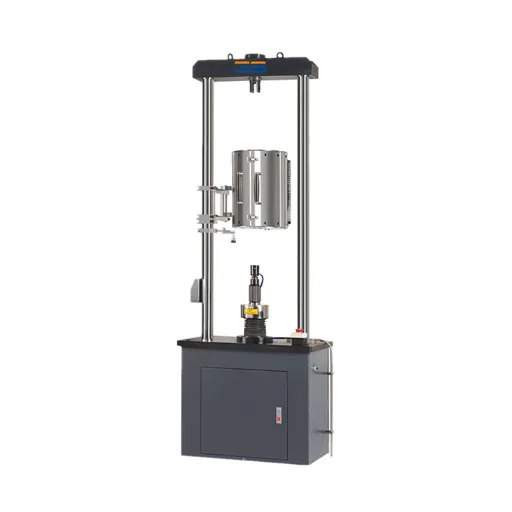
Interpreting Data from Stress Rupture Tests
Stress rupture data interpretation consists of establishing the correlation between the stress level applied to the material and the rupture time, considering these parameters at different temperatures. The industry looks for trends that reflect the long-term fixation of the fabric so as to infer its possible behavior under similar conditions. By plotting stress versus time in a logarithmic scale, one can analyze the rupture life of the specimen and judge its ability to retain loads over the course of time.
Key Data Points for Analysis
- Rupture Time: Time to material failure under constant stress
- Applied Load: Magnitude of stress applied during testing
- Test Temperature: Temperature conditions during the test
- Deformation Rate: Rate of material deformation over time
The rupture time, the load applied, and the temperature present during the test constitute some of the most relevant data. An analysis of these parameters will prepare the stress rupture curve for a given material, which is crucial to its assessment in terms of reliability and life. It might also help in bringing out abnormal cases, such as premature failures, which may be indicative of material defects or some external influences. These observations can underpin changes in design or material selection depending on the criteria for performance.
To make sure interpretations are accurate, results must be compared with standard benchmarks or verified by repeat tests. Data that would constitute a reliable set are those that would be expected theoretically under ideal testing conditions. Through this structured method, a more precise evaluation of the material is achieved, which forms the basis for inferences in engineering and manufacturing procedures.
Common Metrics and Standards (ASTM)
The American Society for Testing and Materials (ASTM) is probably the most important of common metric agencies which promulgates international standards for the testing of materials and ensuring their quality and performance. From construction to manufacturing and aerospace, these standards require reliability, uniformity, and safety. They specify how materials should be tested: conditions, methods of testing, acceptance criteria, and so forth.
Some usual metrics often referenced in ASTM standards are tensile strength, yield strength, hardness, and elongation. To explain tensile strength-the name suggests-it measures the maximum stress that a material can sustain while being stretched. On the other hand, yield strength is the strength corresponding to the loading at which the material begins to deform plastically. These metrics ensure that the materials meet the requirements applicable to their application and will perform under the applied loads as expected.
Being adopted by ASTM standards ensures better grades in product uniformity and alignment with regulatory requirements. These are internationally recognized standards that help build trust in global trade and allow interoperability amongst manufacturers of different regions. In short, ASTM standards serve as the pillars of the quality assurance programs, ensuring that the best innovations rest on the bedrock of reliability and uniformity.
Emerging Trends in Stress Rupture Testing
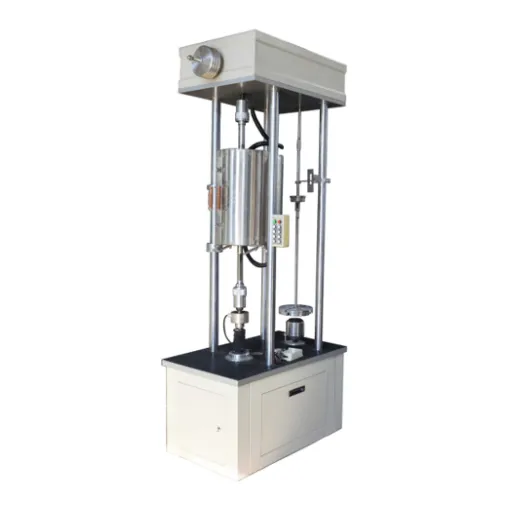
Technological Advancements in Testing
Automated Testing Systems
Increased precision and consistency, reduced human error, extended testing periods with minimal supervision
Modeling & Simulation
Predict material behavior without extensive laboratory tests, saving time and capital
AI & Machine Learning
Advanced data interpretation, pattern recognition, and insights beyond traditional analysis
Stress rupture testing has seen significant improvements when modern technology has been introduced. One of the major developments over the years has been in realizing automated testing systems for increased precision and consistency. Such testing systems diminish human error and enable extended testing periods under minimal supervision while data collection remains reliable and efficient. Further, with modern-day sensors and monitoring tools, one can collect real-time data on the monitored material or performance, which helps in timely evaluation and decision-making.
An equilibrium result has been the mechanization of modeling and simulation. In truth, these provide the prospect for a basic prediction of material behavior in stress conditions, rather than undertaking copious laboratory tests. Given that a particular environmental factor or load condition can be introduced for the simulation, an industry stands to maximize its design and material-testing schemes, further saving time and capital. This setting likely favors more industries that consider high-performance materials: aerospace and energy.
Further evolution of data interpretive procedures, including artificial intelligence and machine learning, are now running into new interpretation opposites in analyzing test results. AI-based systems allow a huge amount of data to be examined, to discover interesting relations, and to really give worthy insights that might not come through immediately in traditional processes. This goes to destroying the monotonous testing, providing results that are highly dependable and trustworthy. So these 21st-century technological developments are challenging stress rupture testing to keep the standards of materials higher for more difficult applications.
Impact on Aerospace and Renewable Energy Industries
Process advancements have contributed greatly to the aerospace and renewable energy industries where materials are required to perform reliably. In aerospace, a stress rupture test is an enormous safeguard that materials will endure such extreme conditions as temperature, mechanical stress, and strain under longtime extremes. This is imperative from the standpoint of structural integrity and safety of components like turbine engine and airframe, wherein any material failure, be it minor, can lead to catastrophic consequences.
One of the other potential applications is for stress rupture testing in the field of renewable energies for the development of durable materials for equipment, like wind turbines and solar panels. Such materials are called to withstand harsh environmental conditions, such as sudden blowing winds, temperature changes, and hours of sunlight radiation. When stress rupture technology is able to provide accurate and reliable testing, the engineers can select or refine materials that will maximize efficiency and longevity of the energy, which results in less maintenance and better performance of the energy system.
Modern stress rupture testing meets various timely topics: safety, efficiency, and sustainability. It enables the aerospace sector in the furtherance of next-generation aircraft and space exploration technologies and assists renewable energy in the global movement toward clean energy. By testing rigorously, these industries verify that materials conform to the demands imposed by an ever more complex and challenging application environment.
Future Directions in Creep and Stress Rupture Testing
Future Research Directions
- Automation & Digitization: Advanced automated systems with minimal human intervention
- New Materials Testing: Adapted methods for composites, alloys, and additive manufacturing
- Sustainability Focus: Greener testing practices and reduced energy consumption
- Enhanced Simulation: High-fidelity simulation reducing need for physical testing
Research in creep and stress rupture testing largely branches out in ways that could lead to technological innovations enhancing the accuracy, efficiency, and adaptability of tests to new materials and applications application-wise. One very prominent direction is the automation and digitization of testing. Automated testing systems minimize human intervention or error and also carry out long-term experiments with very little supervision while still maintaining consistent data outputs. Meanwhile, digital solutions in the form of advanced data analytics and machine learning are instrumental in aiding the interpretation of test results and making predictions regarding the actual performance of a material under various conditions. Such innovations will provide industries with avenues through which they can fast-track testing procedures and arrive at quicker and well-informed decisions.
Another important area of the programme is testing methods of new materials. With developments in composites, alloys, and additive manufacturing, traditional testing parameters need to be adjusted so that these materials can be more effectively evaluated. For example, high-precision testing equipment is being designed with the special characteristics of lightweight composites and high-temperature alloys in mind. Developing testing systems for these materials will ensure that they fulfill the stringent requirements for safety and durability, particularly in the aerospace, energy, and automotive industries.
Sustainability interacts with stress rupture testing in a way that places the future of such testing in its focal concern. Practitioners are inquiring into greener testing practices that emphasize lower energy consumption and sourcing from sustainable materials for the testing setup. Alternatively, simulation techniques may develop to a point where extensive physical testing may no longer become a necessity, while still ensuring the high fidelity of simulation output on material performance under stress. These would go together to ensure that creep and stress rupture testing continues to evolve to meet the needs of the innovator’s environmental consciousness.
Challenges and Innovations
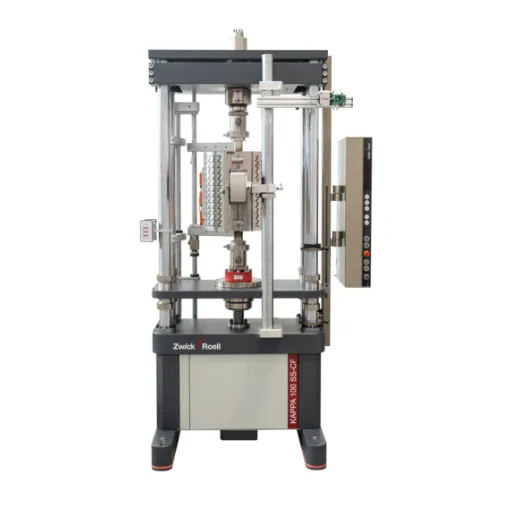
Common Challenges in Stress Rupture Testing
Major Testing Challenges
- Extended Testing Duration: Tests can last weeks, months, or even years, increasing costs and complexity
- Environmental Control: Maintaining precise temperature and stress conditions throughout long test periods
- Data Baseline Issues: Limited reference data for new materials makes accurate prediction difficult
First, several challenges affect the stress rupture test that have to be solved in order to preserve accuracy and reliability of the results. One main difficulty lies in the extensive time the tests demand because these experiments are supposed to simulate very long periods of material behavior under load, with usual durations extending for weeks, months, or even years. The long nature of these tests, in turn, has the humorous effects of raising costs, increasing logistics complexity, and stretching the development cycle for materials and processes.
An equally important factor is also the environmental factor, that is, in these tests, the temperature and the applied stress should be maintained and controlled in such a fashion that any minuscule variation would mean that different results would be issued and therefore not much reliance be placed on these results. Such controls are best ensured with uniform testing conditions, which invariably necessitate an advanced technical facility with operators ever-so-meticulous in the monitoring process- thus, lessening-industrially price-wise, and more profoundly, in time.
Finally, a more accurate but heard-of situation emerges in data availability for using those data in modeling and prediction. Without a baseline for reference, it becomes very hard even to predict the behavior of a material under stress-rupture conditions with reasonable accuracy. It is even more challenging in the case of a new material because this means there is hardly any testing data for the material or none at all. Overcoming these obstacles will require better testing methods and simulation techniques, along with standardized procedures to streamline the process and make it more reliable going forward.
Innovative Solutions to Overcome Testing Limitations
Innovative Solutions
- Advanced Instrumentation: High-precision strain measuring devices and automated systems
- Predictive Modeling: Computational simulation reducing need for physical testing
- Standardized Methods: Common testing protocols for reproducible results
- Industry Collaboration: Shared knowledge and testing standards development
Testing advanced stress-rupture materials should combine advanced technologies and accepted procedures. Knowledge about the stress-rupture properties of materials can be best shared with one another with high precision instruments like new generation strain measuring devices. Automated test systems provide a valuable input in the collection and analysis of such data with minimum errors and limited human intervention.
Simulation techniques provide yet another dimension to the process. Combining predictive modeling with computational simulation can substantially limit physical testing in the case of relatively new materials. Using simulations also ensures high-accuracy reproduction of various stress-rupture conditions under which material behavior may be extrapolated, or a lot of laboratory investigations are just not necessary. It is just faster and cheaper than the traditional way of testing.
Finally, application of standardized methods results in reproducible results. Collaboration between industries and research institutions should be sought to develop common testing protocols. Such standards would make it possible to build a bridge between the results generated by the various research works and create more confidence about the predicted performance of the concerned material. All of these new methods together establish a better ground for evaluating materials in stress-rupture areas, which can even be used for newer and untested materials.
The Role of Testing Labs in Advancing Methodologies
Testing laboratories are the custodian for the working of methodologies for material performance evaluation. Through their stringent assessments, testing laboratories ensure that newly developed materials could stand the test of safety, durability, and efficiency requirements. They do so through various standard testing procedures to have a common yardstick for checking and test data for comparing materials. This uniformity in the evaluation process has led to a global consensus on material certifications.
Another method for labs to promote innovation is through cooperation with researchers and target industries. This allows them to develop more advanced testing procedures, capable of being customized to various parameters posed by newer applications. Laboratories mimic real-life scenarios in controlled environments to give precise information on how certain materials would react under stress, fatigue, and adverse environmental influence, thus helping industries realize where possible failure of material can occur.
Test labs ensure reproducibility and credibility by employing the utmost scientific instruments and methodologies and maintaining international quality standards. Their scrupulous adherence to well-laid-out regulations and maintaining an impartial viewpoint could only help build respect towards them from manufacturers, researchers, and regulatory agencies. Such confidence otherwise reduces at least the universal acceptance of test results from test labs, whereas innovative materials require proper acceptance to be considered for various applications and industries.
Frequently Asked Questions (FAQ)
What is stress rupture testing?
A stress rupture test is a type of mechanical test carried out to determine the time of rupture of mechanical components when they receive a tensile load at a given elevated temperature. This testing is, therefore, necessary to characterize materials with regard to their behavior under conditions of long exposure to stress and heat.
How is a stress rupture test distinguished from creep testing?
The stress rupture test, much as the name suggests, defines the time to the occurrence of fracture at constant load and temperature, but creep testing measures the creep or deformation of a particular material with time at set stress.
What are some standard test methods used for stress rupture tests?
The standard test methods for conducting stress rupture tests include ASTM E139 and ASTM E292. Provided in these standards are sorts of means whereby the stress rupture property may be evaluated in metallic materials at specified temperature and loading conditions.
What is the importance of temperature control during stress rupture testing?
Temperature control is crucial in stress rupture testing because high temperatures may greatly alter the behavior of the metal being tested, resulting in accelerated stress and creep rates. If cant pressure in supreme temperature, the exact performance of the material under test could be evaluated.
What materials are commonly subjected to stress rupture tests?
Stress rupture tests are generally applicable to metallic materials, especially those subjected to applications at high temperatures, like alloys and superalloys. These tests serve as a means to determine the ultimate tensile strength and life of materials under stress.
What is the function of creep readings in stress-rupture testing?
Creep readings during stress-rupture testing are measurements of deformation over time. They provide useful information about the material response under sustained loads and assist in predicting time to fracture.
How do they conduct the testing services for stress rupture tests?
Stress rupture testing services consist of preparing test samples, placing them under a controlled stress-strain and temperature environment while continuously collecting data until rupture is achieved. Thus, testing services provide good testing and analysis of material properties.
What significance does the time to rupture have in material testing?
The time to rupture is a very important factor in the material testing process since it determines the resistance a material has to failure under constant stress. Since such a parameter is understood, engineers and designers can choose safe materials if the use implies longevity and durability.
Can these stress rupture tests be conducted in a vacuum or an inert atmosphere?
Yes, stress rupture tests can be conducted in a vacuum or an inert atmosphere to minimize oxidation or other reactions that might affect the material’s performance. A controlled environment such as this ensures accurate test results and reliable data for material evaluation.
How does accelerated stress affect the results obtained from stress rupture testing?
Accelerated stress halts fast rupture times and gives extra insight into material behavior when subjected to extreme conditions. This consideration matters when materials face load increases suddenly or under adverse environmental conditions.
References
- What is Creep and Stress Rupture Testing? – Explains stress rupture testing at elevated temperatures and its purpose in determining material durability.
- Stress-Rupture Test – an overview – Provides an overview of stress rupture tests, focusing on creep strength and rupture life.
- Creep and Stress Rupture Testing – Details testing methods, including ASTM E139 and ASTM E292 standards, for high-temperature stress rupture tests.
- Creep and Stress Rupture Testing – Discusses the importance of evaluating time-dependent behavior of materials under stress at elevated temperatures.

